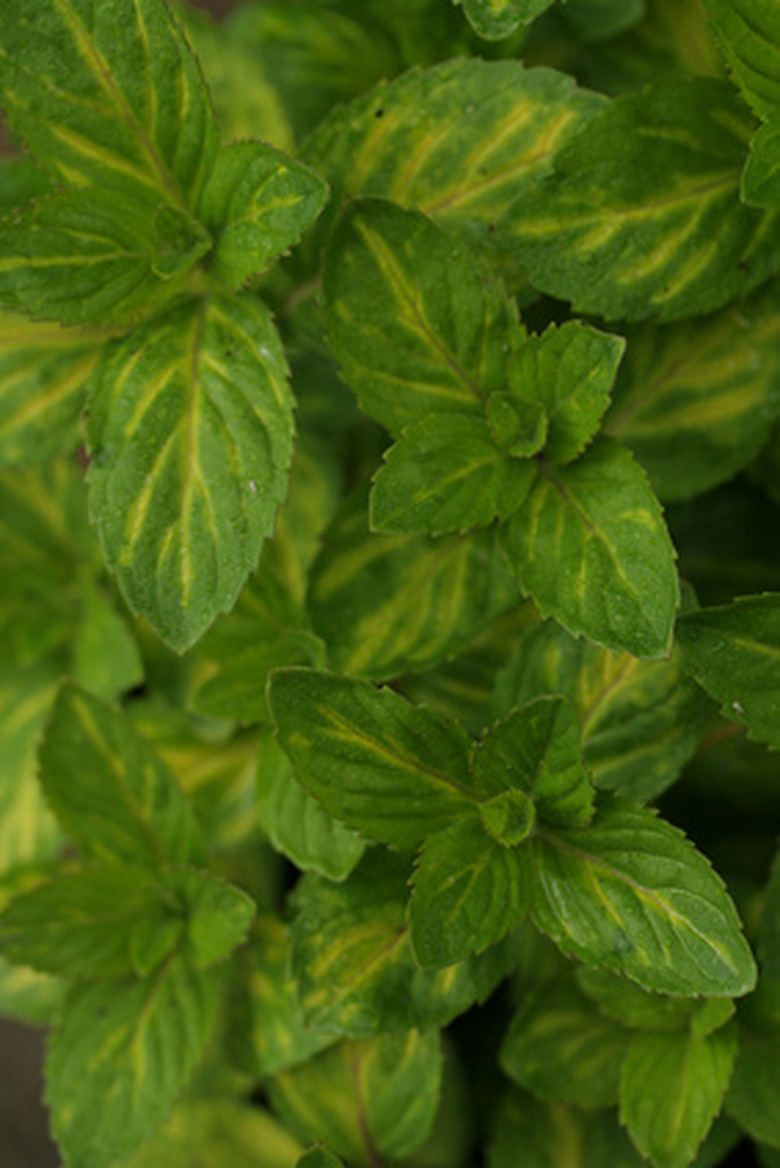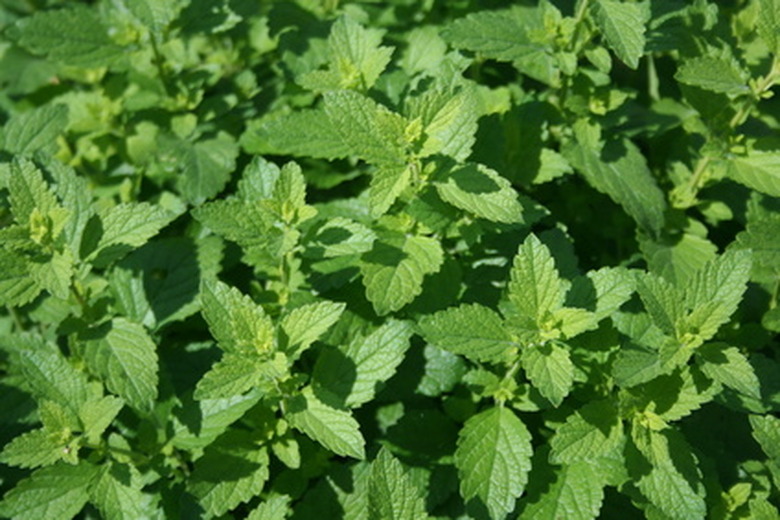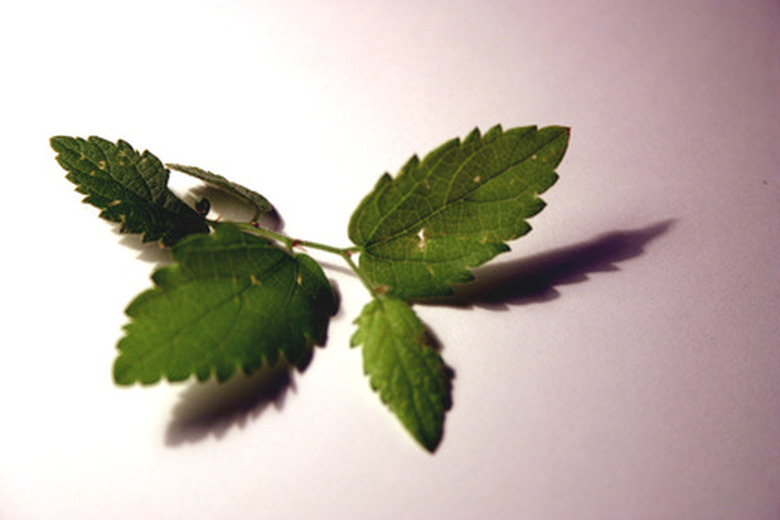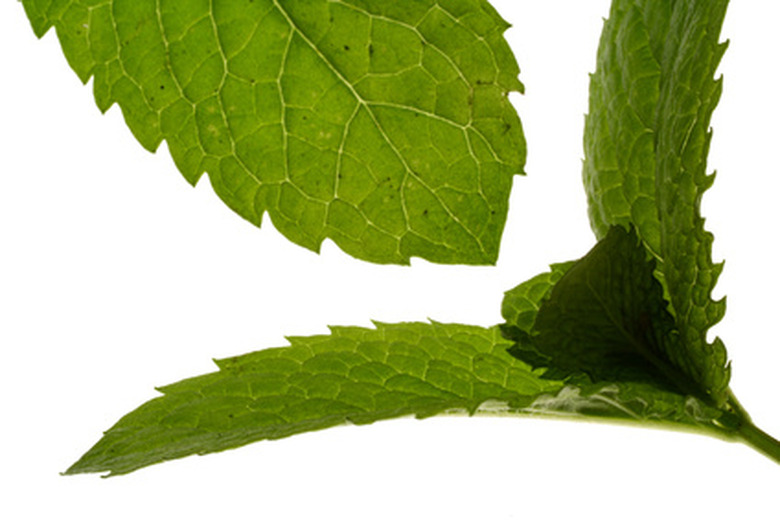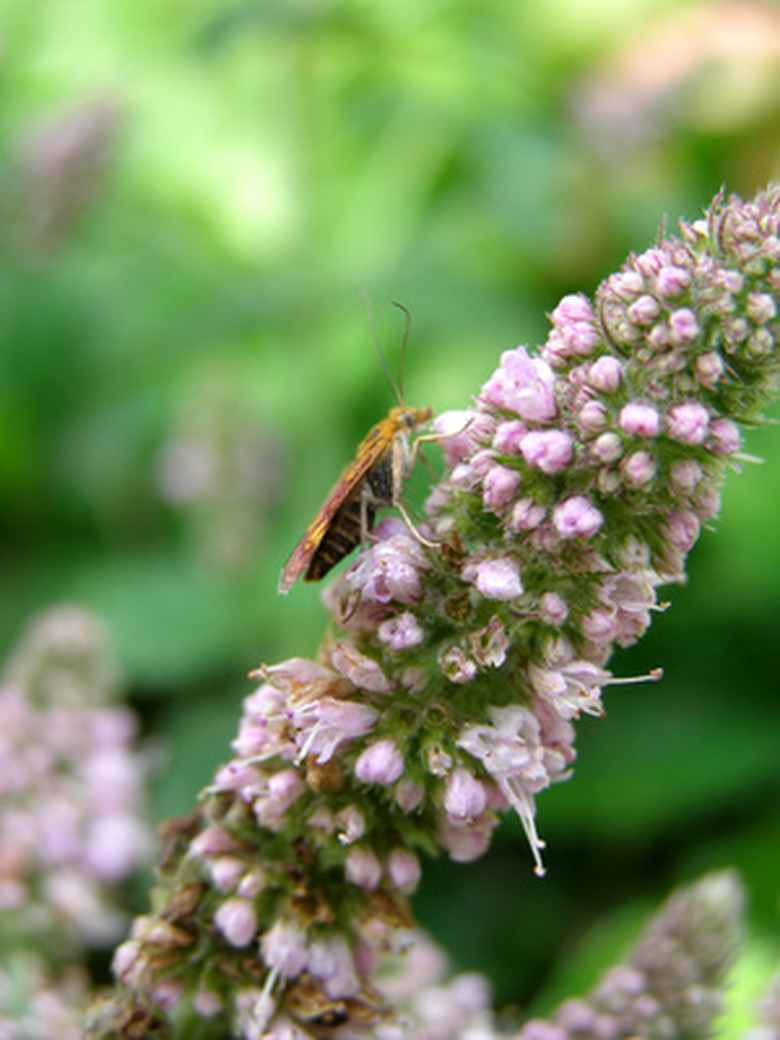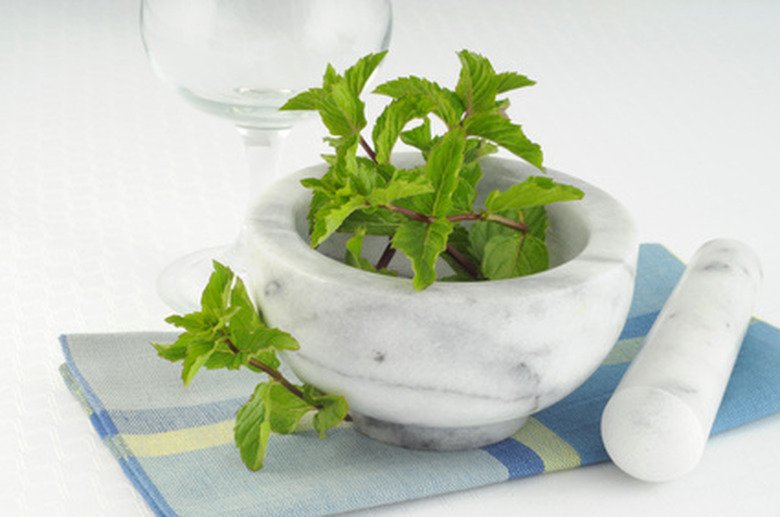Description Of A Mint Plant
Mint plants are all members of the Lamiaceae family and the Mentha genus. These hardy perennials have been grown and used for centuries for qualities that lend themselves to decorative, culinary, medicinal and aromatic purposes. Mint plants are identified most readily by their distinctive rhizomes, stems, leaves and flowers.
Mint Rhizomes
Mint plants all propagate by means of rhizomes–long, vinelike, fleshy roots. Rhizomes are not easily discouraged by even several yards of garden cloth, which means that mints can be highly invasive in a garden. To keep the plants growing where they should be, and nowhere else, many growers confine them to containers, even underground. Mint plants prefer moist, loose soils but can withstand drier conditions.
- Mint plants are all members of the Lamiaceae family and the Mentha genus.
- Mint plants are identified most readily by their distinctive rhizomes, stems, leaves and flowers.
Mint Stems
The stems of mint are square-shaped. This is most obvious when rolled between a finger and thumb to feel the corners. Stems will also become woody over time. Some gardening sources recommend mowing mint plants periodically to encourage new, soft stem growth from ground level. Soft stems and leaves can be used for culinary applications.
Mint Leaves
Mint plants sprout symmetrical, serrated leaves on opposite sides at the same height of the stem. Shapes can be wide or narrow, with at least a blunt tip. Leaf color can vary from dark green, blue, grey-green and paler to shades ranging all the way to yellow. Some varieties have yellow leaf borders.
- The stems of mint are square-shaped.
- Some gardening sources recommend mowing mint plants periodically to encourage new, soft stem growth from ground level.
Mint Flowers
The flowers of the mint plant form a rounded spear shape cluster around a long stem, of white to purple, and every shade in between. The individual blossoms at the bottom of the cluster open first, to reveal four lobes, not all of equal size. Ultimately the small, hard fruit that is produced contains one to four seeds.
Culinary Uses for Mint
The leaves of mint are well known in culinary circles for their sweet, cool taste. Mint lends a boost to drinks such as teas, mint julep and in mojitos. Mint jelly often flavors lamb dishes. Mint flavors everything from toothpaste to chewing gum to ice cream and candies. Fresh leaves garnish fruit and chocolate desserts. When steamed with vegetables such as peas, mint helps to enhance the flavor of the dish.
- The flowers of the mint plant form a rounded spear shape cluster around a long stem, of white to purple, and every shade in between.
- When steamed with vegetables such as peas, mint helps to enhance the flavor of the dish.
Other Uses for Mint
Mint is valued for its insect-repellent properties. Vegetable gardeners often place pots of mint among other crops to repel pests. Campers rub leaves on their skin and tents to drive away mosquitoes and ants. Crushed mint applied to an insect bite brings relief as well.
Mint tea soothes upset stomachs and aids digestion. The strong odor of mint leaves helps with mild congestion.
With its perennial care-free cultivation and so many uses in the kitchen, it's no wonder mint is a popular presence in many backyards.
- Mint is valued for its insect-repellent properties.
- Vegetable gardeners often place pots of mint among other crops to repel pests.
